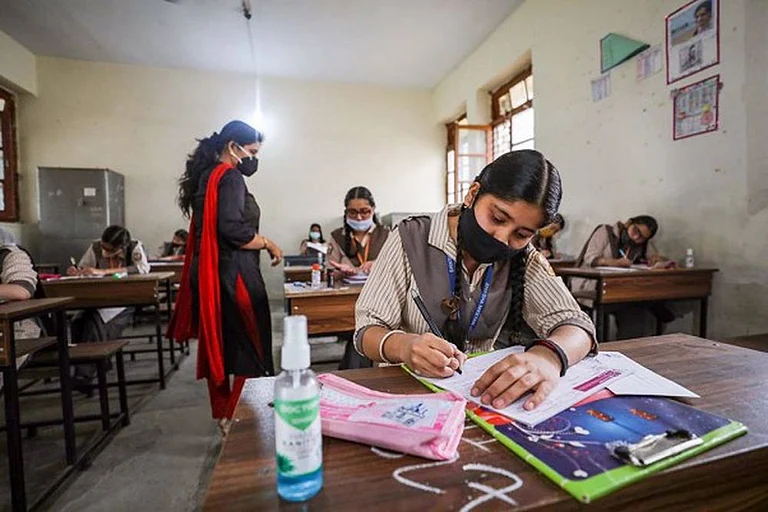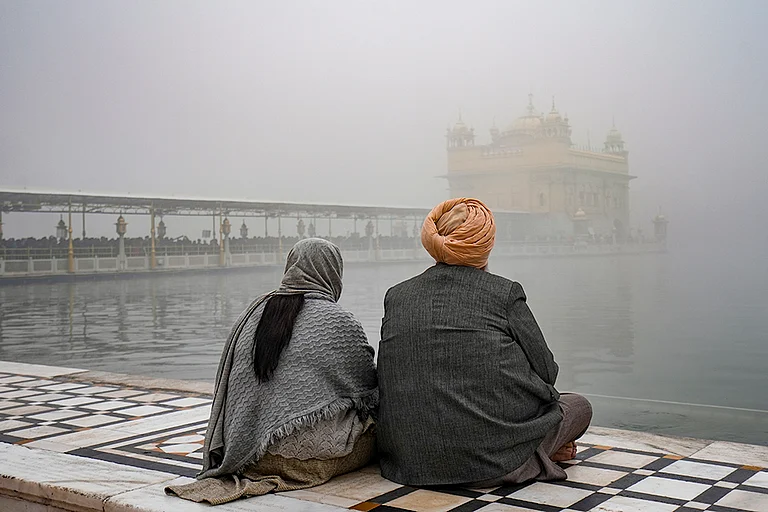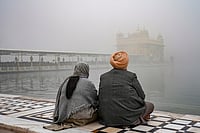As "a lusty child of the non-cooperation days" (as Nehru described it), Jamia encapsulated two dominant trends, each with many points of convergence in the post-Khilafat era: the reformist inclination of some Muslim divines who were also profoundly anti-British, and the political radicalism of Aligarh-based students who rejected the pro-British proclivities of their institution and gravitated towards Gandhi and Nehru. In 1935, Turkish author Halide Edib found Jamia much nearer to the Gandhian movement than any other institution. Whether others agreed or not, the Jamia biradari (fraternity) was convinced of its quintessential role as a national institution, destined to contribute to the shaping of modern India. "In name Jamia was also a university... but in fact it was a camp of the satyagraha volunteers," recalled Marxist historian K.M. Ashraf who left Aligarh to join Jamia.
Though founded by Muslims, Jamia was Muslim only in name. The atmosphere was mixed and cosmopolitan, thanks to the presence of several Hindu and Christian teachers, including a few from Germany, where the young Zakir Husain, Mohammad Mujeeb and Abid Husain (as also Lohia) learnt their first lessons in nationalism and developed their antipathy towards British colonialism. The theological disputations which marred campus life in Aligarh were alien to Jamia’s spirit. The communal debates which turned Aligarh University into "an arsenal of Muslim India" did not stir passions in Jamia. The consensus on the campus, one that has not yet been repudiated, was that India’s Muslims had deep roots in Indian society, were natural inhabitants of an Indian world, and had much in common with other communities "in fundamental, religious and moral consciousness, social structure, family life and the general way of living that can easily fit into any national pattern" (Abid Husain).
Jamia’s social and intellectual manifesto was the outcome of enlightened political and intellectual currents sweeping across India. Its education programme bore the Gandhian imprint and incorporated some of Tagore’s innovations at Shantiniketan. Its liberal orientation owed much to Syed Ahmad Khan, the outstanding Aligarh reformer. And its own reconstruction of the Islamic ideal of an active political life was inspired by Maulana Azad. In fact the Maulana’s neo-intellectual modernism, religious universalism and commitment to composite nationalism represented Jamia’s essence. No wonder, the Jamia fraternity was deeply disturbed by Mohammad Iqbal’s plea for a Muslim state in north-western India. Mujeeb, who presided over Jamia’s destiny for decades, said so to Iqbal when he visited the campus in early 1935 to chair Edib’s lecture. He said Muslims must live and work with other communities to realise the ideals of citizenship and culture.
The two-nation theory was anathema to an institution whose sole raison d’etre was to promote cultural integration, foster syn-cretic values and strengthen inter-community ties. The first chancellor, Hakim Ajmal Khan, wanted students to know each other’s culture: "The foundation of a united Indian nationhood depends on this mutual understanding." Dr M.A. Ansari, who nursed Jamia when it was threatened with closure, did not believe in a politically separate community. He said India must be a field of cooperation between different faiths. People must live by the moral dictates of a religious creed, but theological subtleties and contrived political distinctions must not disturb harmonious living.
Jinnah’s agenda ran contrary to the Ajmal-Ansari (or Gandhi-Nehru) project. The Jamia biradari lionised Gandhi, their chief benefactor, admired Nehru’s vision and regarded both as models of impeccable political conduct. In the ’30s and ’40s, they accepted Gandhi’s guidance in working for an institution free of British control, and promoted his constructive programme without being lured by office, power and authority. Not surprisingly, the Muslim League in the ’40s rebuked Zakir Husain and his band of followers for turning Jamia into a "Hindu stronghold" and "Hinduising Muslims" through the Wardha scheme of education prepared under the supervision of Gandhi, the "most astute and cunning hypocrite of all time".
An institution with a secular and nationalist record could not escape the mob fury that struck terror in Delhi during the 1947 communal holocaust. Jamia’s property in Karol Bagh was looted and destroyed. There were other tragedies as well; yet Jamia survived such harrowing times and was, in Gandhi’s opinion, "like an oasis in the Sahara". In its search for moral and political support, Jamia could have turned quasi-religious or quasi-communal after Independence. Nothing of the sort happened. It remained secular and nationalist to the core. Its long-serving vice-chancellor, Mohammed Mujeeb, proudly announced: "I look on this (Jamia) as a secular school."
Jamia remained true to its ideals partly because men like Zakir Husain and Mujeeb never capitulated before the forces of reaction. This is the legacy the Jamia biradari must cherish most.
Having been traumatised by an ill-advised agitation in 1992, Jamia must live up to the traditions of Ajmal Khan and Ansari. More recently, it must derive inspiration from men like Anwar Jamal Kidwai who placed Jamia on the intellectual map of India.
Nehru once said: "Few institutions succeed in retaining for long the impress of the ideal that gave them birth. They tend to become humdrum affairs, perhaps a little more efficient, but without the enthusiasm that gives life. Jamia, more I think than any other institution I can think of, retained some of the old inspiration and enthusiasm." I wonder if this is true anymore. Perhaps, most other institutions have lost their creative energies and forgotten their liberal past. Perhaps not. Where in India can a teacher be vilified, assaulted and not allowed to return to the campus? The Jamia of Ajmal Khan, Ansari and Zakir Husain holds this distinction.


























